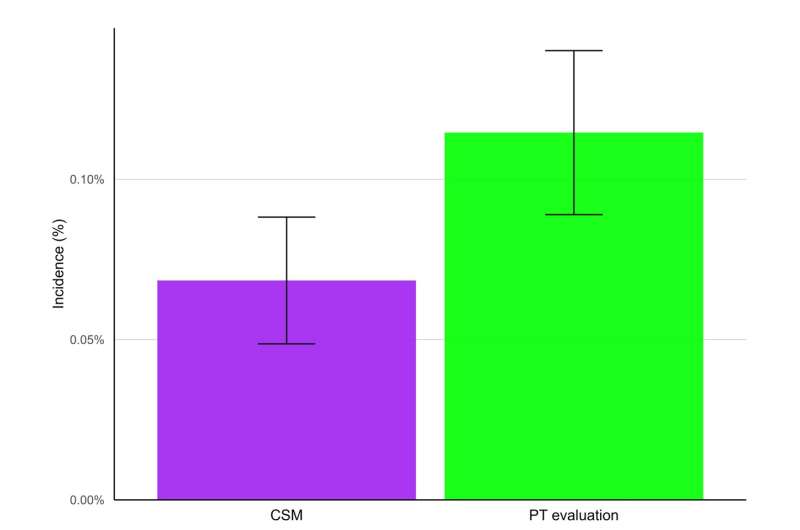This article has been reviewed according to Science X's editorial process and policies. Editors have highlighted the following attributes while ensuring the content's credibility:
fact-checked
peer-reviewed publication
trusted source
proofread
Study finds chiropractic spinal manipulation does not increase the risk of cauda equina syndrome

A recent study led by researchers at University Hospitals (UH) Connor Whole Health and collaborators at Duke University Medical School examined whether chiropractic spinal manipulation could lead to an increased risk of cauda equina syndrome (CES), a rare but serious condition affecting the bundle of spinal nerve roots in the lower back that requires emergency surgery.
The study, titled " Association between chiropractic spinal manipulation and cauda equina syndrome in adults with low back pain: Retrospective cohort study of US academic health centers," was recently published in PLOS One.
Case reports have documented instances of CES occurring after spinal manipulation—a hands-on treatment often used by chiropractors—suggesting that CES could be an adverse event related to this therapy. However, others have argued that this is not a causal association. Prior to now, no large study had investigated this concern.
This retrospective study analyzed medical record data for over 130,000 adult patients from academic medical centers who received either chiropractic spinal manipulation or physical therapy evaluation for low back pain in the United States. The two cohorts were closely matched on demographics and other health factors to make them comparable in terms of baseline risk factors for CES. The study used a follow-up window of 90 days to identify new diagnoses of CES.
The overall CES incidence aligned with prior estimates in people with low back pain, suggesting these patients may have an inherent susceptibility to CES regardless of treatment approach. However, the authors found no meaningful difference in the risk of developing CES between those who received spinal manipulation cohort (0.07%) and those who did not (0.11%).
"Patients with low back pain may have underlying disc degeneration, which can pose a risk for developing CES. Accordingly, clinicians treating low back pain should be aware of CES as a surgical emergency," said lead author Robert J. Trager.
"This study is the largest and most rigorous investigation regarding the potential association between CES and chiropractic spinal manipulation to date. While more research is needed, these findings offer further support for current low back pain guidelines recommending this treatment approach as first-line care for patients with low back pain," added co-author Dr. Christine Goertz, Professor at Duke University School of Medicine.
"This study is reassuring regarding the safety of chiropractic care for low back pain," said Dr. Françoise Adan, Chief Whole Health and Well-being Officer and Director of UH Connor Whole Health.
More information: Robert J. Trager et al, Association between chiropractic spinal manipulation and cauda equina syndrome in adults with low back pain: Retrospective cohort study of US academic health centers, PLOS ONE (2024). DOI: 10.1371/journal.pone.0299159





















